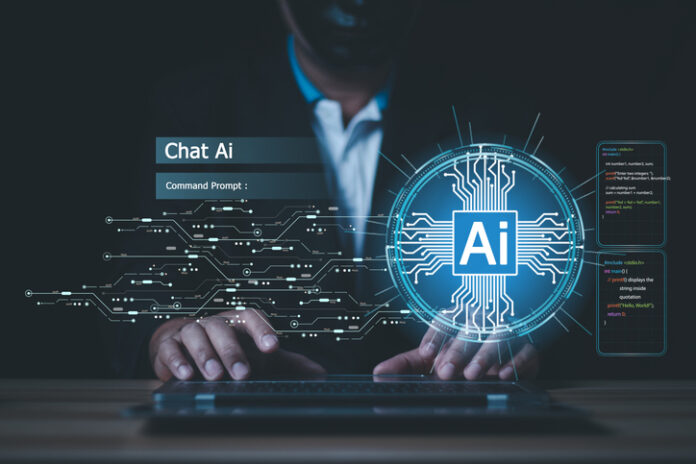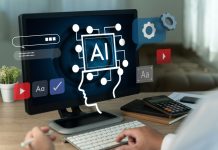Artificial intelligence has surely proved to be a game-changer in the modern world, changing dimensions in the way people work, create, and communicate across industries. The sudden rise of artificial intelligence tools automating work in smarter ways, bringing more creativity, and giving intelligent insights has been colossal. Among all these, ChatPDF is raising eyebrows as it will let users interact with PDFs with ease, draw relevant information from them, and summarize cumbersome documents. With Blaze, Chat-GPT, Jasper and more and more advanced AI solutions, the possibilities seem endless, influencing everything from content creation to data analysis.
The Evolution of AI Tools
With many improvements in machine learning and deep learning, AI-powered tools have grown a lot in the last couple of years. In the early days of AI, systems were narrow in the process of executing tasks, such as basic automation in manufacturing or chatbots that interact with customers. In addition to GPT-4, DALL·E and Claude 3.5 Sonnet, other advanced models included in these tools permit the execution of such complex, human-like functions in a very human manner. These AI models are applied in many areas-from language processing to the creation of images, and even video editing-all because it requires a combination of creativity and precision.
What makes modern AI tools stand apart from the rest is how they learn and adjust over time. With continuous feeding and input, these tools enhance their algorithms, hence giving more accurate and relevant outputs accordingly. Many businesses are leveraging AI services to continuously improve their operations, from customer service to product development, by harnessing this adaptive learning capability. For instance, today’s AI assistant can start from ideation and go all the way to write a complete article, fully adapting to the user’s preferred tone and style. Indeed, it has opened new avenues for practitioners across verticals to move to more strategic work at higher conceptual levels, with the AI increasingly assuming responsibility for more routine undertakings.
Creativity Meets Technology: The Power of AI in Art and Design
This field increasingly adopts AI technologies, uniting advances in AI with the world of art and design. Due to the sudden development of AI, its latest generation of tools now performs magic, attaining capabilities of producing marvelous visual content like digital artwork, videos, and even 3D models. Makers and designers found this quite useful for exploring new ideas without having to invest hours of manual work in making a prototype of that idea. With tools such as *Monica*, an integrated AI assistant that is powered with some of the most advanced models of AI-GPT-4o, GPT-4, Claude 3.5 Sonnet, and DALL·E 3-users can create art, summarize long texts, create catchy copies, and even summarize videos in concise form.
Recent happenings in the field of creativity probably revolve around AI image generator from text technology. This involves the use of a simple text description which then gets transformed into an image with full details, at times photorealistic. Be it an artist needing some inspiration or a businessman in need of new marketing material, AI tools make these creative processes faster and easier without really affecting the quality.
AI Tools in Data and Document Management
AI has fully revolutionized the aspects of information analysis and document management. From corporations down to mom-and-pop businesses, organizations of all dimensions have been putting into practice the use of AI in processing large amounts of information efficiently and effectively. A very good example in this respect is the use of AI tools in analyzing documents. Managing documents is usually quite a cumbersome task, especially when dealing with elongated reports, some legal documents, and even academic research. AI-enabled tools like ChatPDF have made things quite convenient: one can easily navigate through a cumbersome PDF by identifying extracted sections and summarizing the most relevant sections.
These AI-powered systems can recognize patterns and make predictions based on data, which becomes very useful in business intelligence and decision-making. For instance, AI can scan thousands of documents for trends in consumer behavior that a company could use to make informed decisions and further refine its strategy. The ability to extract, analyze, and put data into effective use perhaps is one of the major reasons AI tools have become indispensable elements within the modern business ecosystem.
How AI is Reshaping Communication and Customer Service
Artificial intelligence has powered communication and customer service to higher order by developing chatbots and virtual assistants that can respond like humans in real time. It handles several queries at a time and provides the facility for 24*7 support to the businesses as well as the consumer. Now, it can translate languages, summarize conversations, and predict exactly what customers will need based on past interactions to further improve the customer experience. AI sales tools, for example, enhance the sales process by providing data-driven insights and automating repetitive tasks, helping businesses close deals faster. Recommendation systems powered by AI in e-commerce make suggestions according to the preference of the customers, hence improving sales and satisfaction.
AI frees human agents to deal with complex queries, disputes, or personalized advice, while improving the quality of service provided. As AI technology becomes more advanced, its applications in communication may further expand by replacing current forms of interaction with more intuitive and effective systems.
AI in Education and Training
AI tools have begun to heavily enhance the educational sector through personalized learning, automation of administrative tasks, and assistance with content creation. Teachers and students alike benefit from AI-generated quizzes, grading assistance, and personalized study plans crafted around individual students’ strengths and weaknesses. Of all, adaptive learning platforms rank high, which automatically switch content in real-time to fit each student’s learning style and pace for better comprehension and engagement.
Beyond traditional education, AI is also breaking into professional training in industries such as healthcare and finance, where continuous upskilling is paramount. AI-driven simulations and interactive modules provide a safe, controlled environment to learn in, thus making training both effective and efficient.
The Future of AI Tools: What Lies Ahead?
With increased capability and availability, the future of AI tools holds immense promise. From writing full-fledged novels to diagnosing medical conditions with pinpoint accuracy, we can surely expect to see many more complex tasks performed by AI tools. As AI learns and grows older, the boundary separating human capability from artificial capability continues to blur into new frontiers in robotics, virtual reality, and even space exploration.
But with this growth, there is also the corresponding need for ethical considerations. The more this technology becomes part of life, the more issues of privacy, data security, and possible job displacement will be debated. A proper balance will have to be struck between exploiting the capabilities offered by AI and ensuring its deployment is for the benefit of the greater good.
Endnote
AI tooling has revolutionized the way we work, create, and communicate. From document management systems like ChatPDF to advanced AI text-to-image generators, the possibilities will indeed go on and on. As the technological development of these ingenious inventions advances further, so do new opportunities across industries help mold and reshape the future in ways touching both work and creativity. Embracing AI doesn’t just optimize our processes-it redefines what is possible.





































